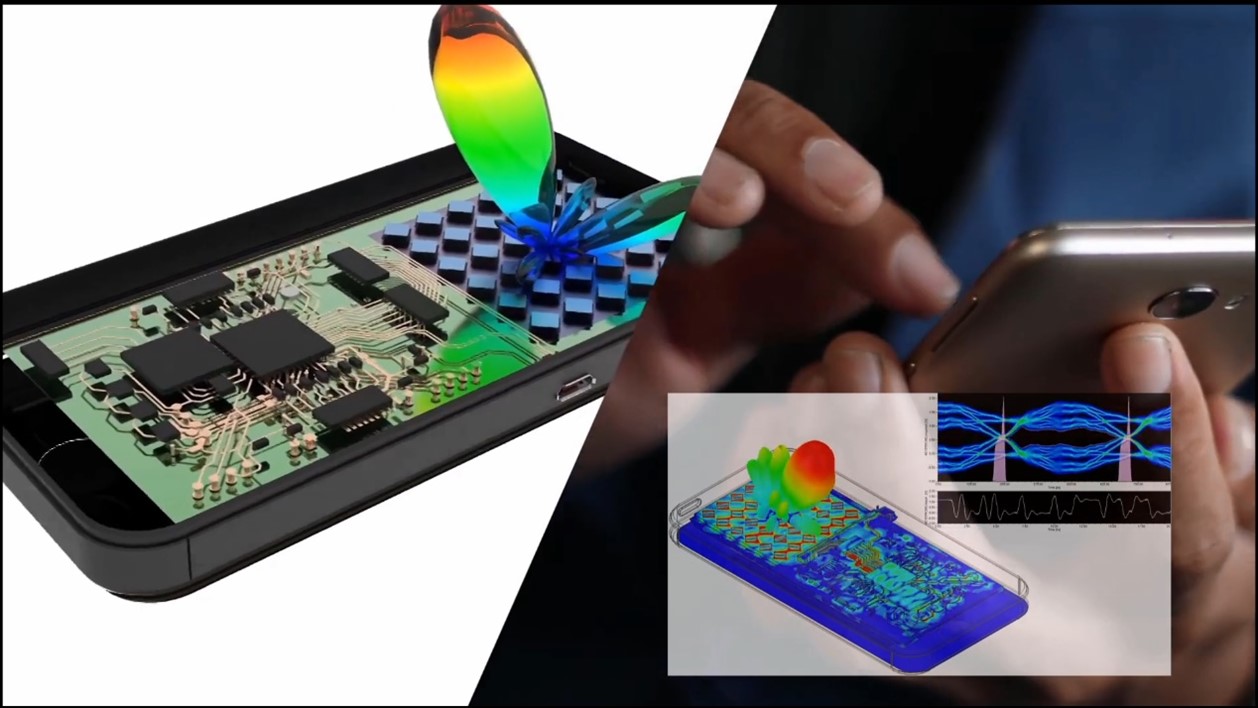Multiphysics simulation is the process of computational methods to model and analyze a system to understand its response to different physical interactions like heat transfer, electromagnetic fields, and mechanical structures. Using this technique, designers can generate physics-based models and analyze the behavior of the system as a whole.
Multiphysics phenomena play a key role when designing any electronic device. In the real world, most devices that we use in our day-to-day life consist of electronics. These devices consist of chips, wires, antennas, casing, and many other components responsible for the final operation and execution of the product. The physical phenomena happen not just within an electronic device but also impact nearby devices. Therefore, it’s important to consider the effects of physical interactions from chip to system and the surrounding environment.
Alternative methods and their shortcomings
Understanding the electrical behavior of any device or system isn’t enough. Designers also need to consider the Multiphysics aspects like thermal, mechanical stress/warpage, and electromagnetic effects. Designers may use different ways to understand the Multiphysics behavior of the system at different levels.
Engineers can simulate each physical phenomenon separately and integrate the results to understand the cumulative behavior. This approach is time-consuming and prone to errors, and does not allow for a comprehensive analysis of the interactions between different physical fields. For example, temperature variations in a multi-die IC package can induce Mechanical stress and mechanical can impact the electromagnetic behavior of the system. Everything is co-related; therefore, a comprehensive Multiphysics solution is required for simulating the physics of the entire system.
To achieve high performance and speed goals, chip designers are embracing multi-die systems like 2.5D/3D-IC architectures. The number of vectors to be simulated in these systems has reached millions. Conventional IC design tools cannot handle this explosion of data, so chip designers considered a limited set of data to analyze the Multiphysics behavior of the system. This approach might work if the system is not high-speed and not used in critical conditions, but it is definitely not applicable for today’s high-speed systems where reliability and robustness are the major requirements.

Ansys provides a complete comprehensive Multiphysics solution that can easily solve millions of vectors to thoroughly analyze the Multiphysics of the entire system- chip-package-system.
Advantages of Multiphysics Simulation from Chip to System
Comprehensive Multiphysics simulation is a powerful method that enables designers to accurately predict and optimize the behavior of complex systems at all levels, including chip, package, and system. Multiphysics simulation has many advantages but some of the most prominent advantages are:
- Enhanced Reliability: Comprehensive Multiphysics simulation methods analyze the physics of each complex component in the system and also consider the interactions between different physical domains. This technique provides more accurate results which ensure the reliability of the system. Ansys offers a wide range of Multiphysics solutions enabling designers to analyze the Multiphysics at all levels, chip, package, system, and surrounding environment.
- Improved Performance: Multiphysics solutions give insight into the different physics domains, their interactions, and their impact on the integrity of the system. By knowing the design’s response to the thermal and mechanical parameters along with electrical behavior, designers can take an informed decision and modify the design to achieve desired performance. In a 3D-IC package, Ansys 3D-IC solution provides a clear insight into the power delivery, temperature variations, and mechanical stress/warpage around chiplets and interposer, allowing designers to deliver higher performance.
- Design Flexibility: Designers can explore a wide range of design options and tradeoffs. It allows designers to take decisions based on yield, cost, and total design time. For example, in a 3D-IC package designers can choose the chiplets based on functionality, cost, and performance. Multiphysics simulation allows this flexibility without extra cost.
- Reduced cost: It allows designers to identify potential design issues early in the development process, reducing the need for physical prototypes and lowering development costs. Using simulation, you can also tradeoff between the BOM costs and expected performance.
- Reduced Power Consumption: A system consists of multiple parts and each part might have different power requirements. By Multiphysics simulation, the designers can estimate the power consumption in each part of the system and optimize the power delivery network.
Ansys offers powerful simulation capabilities that can help designers optimize their products’ performance, reliability, and efficiency, from chip to the system level. By using Multiphysics solutions by Ansys, designers can take informed design decisions while designing.
Learn more about Ansys Multiphysics Simulation tools here:
Ansys Redhawk-SC | IC Electrothermal Simulation Software
High-Tech: Innovation at the Speed of Light | Ansys White Paper
Also Read:
Checklist to Ensure Silicon Interposers Don’t Kill Your Design
HFSS Leads the Way with Exponential Innovation
DesignCon 2023 Panel Photonics future: the vision, the challenge, and the path to infinity & beyond!
Share this post via:






Comments
There are no comments yet.
You must register or log in to view/post comments.